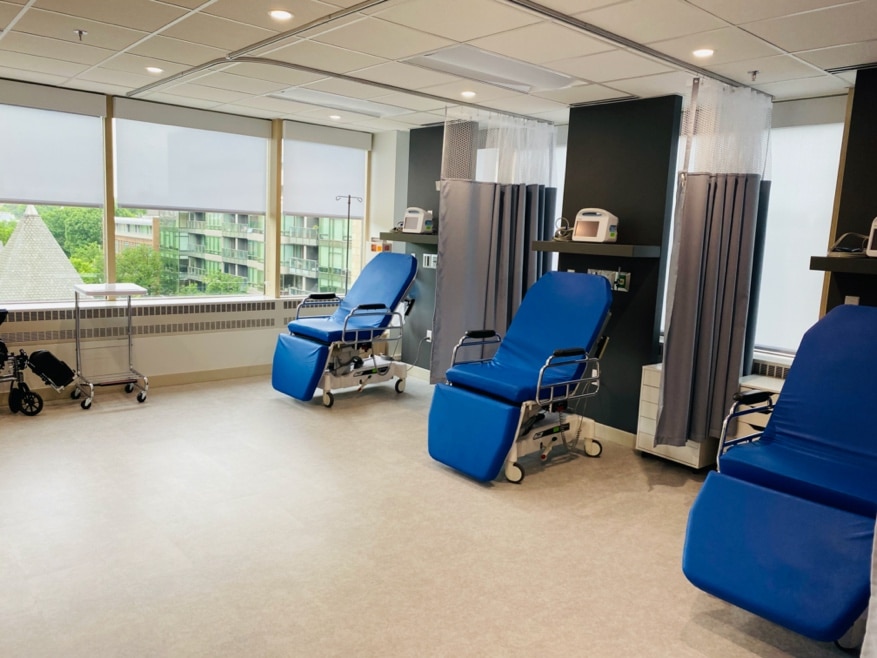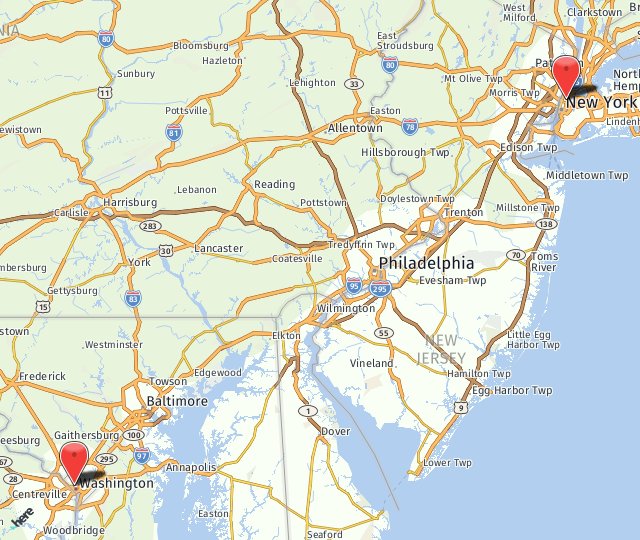Rhinoplasty surgery (aka a cosmetic nose surgery or nose job) is a facial surgery procedure that is performed on people of all ages. Some seek this procedure because they are unhappy with the nose they were born with or with the manner in which aging has changed their nose.
Nothing has a greater impact on how a person looks than the size and shape of the nose. Because the nose is the most defining characteristic of the face, a slight alteration using nasal surgery can greatly improve one’s appearance. If you are dissatisfied with how your nose looks, seek out a rhinoplasty in Washington, DC.
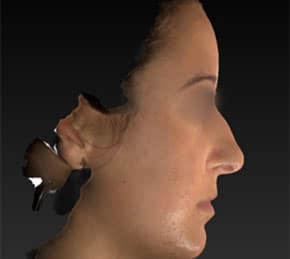
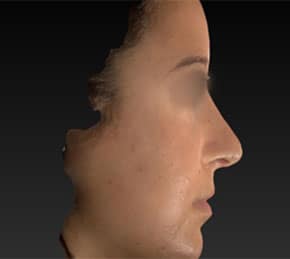

Check out some of our previous work.
What Is a Rhinoplasty Procedure Meant to Do?
A rhinoplasty focuses on nose reshaping, helping you to achieve a more balanced and symmetrical appearance. Some of the features that one may look to correct are the nasal profile, a bulbous tip, a crooked nose, or a deviated septum. For others, an injury may have distorted the nose and caused permanent deformity. In addition to desiring a cosmetic improvement to the nose, some may also be looking to improve obstructed breathing.
Meet Your Rhinoplasty Surgeon
This is one of the most complex and intricate procedures of the face. For this reason, one should go to a surgeon with a great deal of experience and knowledge of this procedure. Dr. Michael Somenek is specially trained in plastic surgery of the face with a particular focus on rhinoplasty in Washington DC.
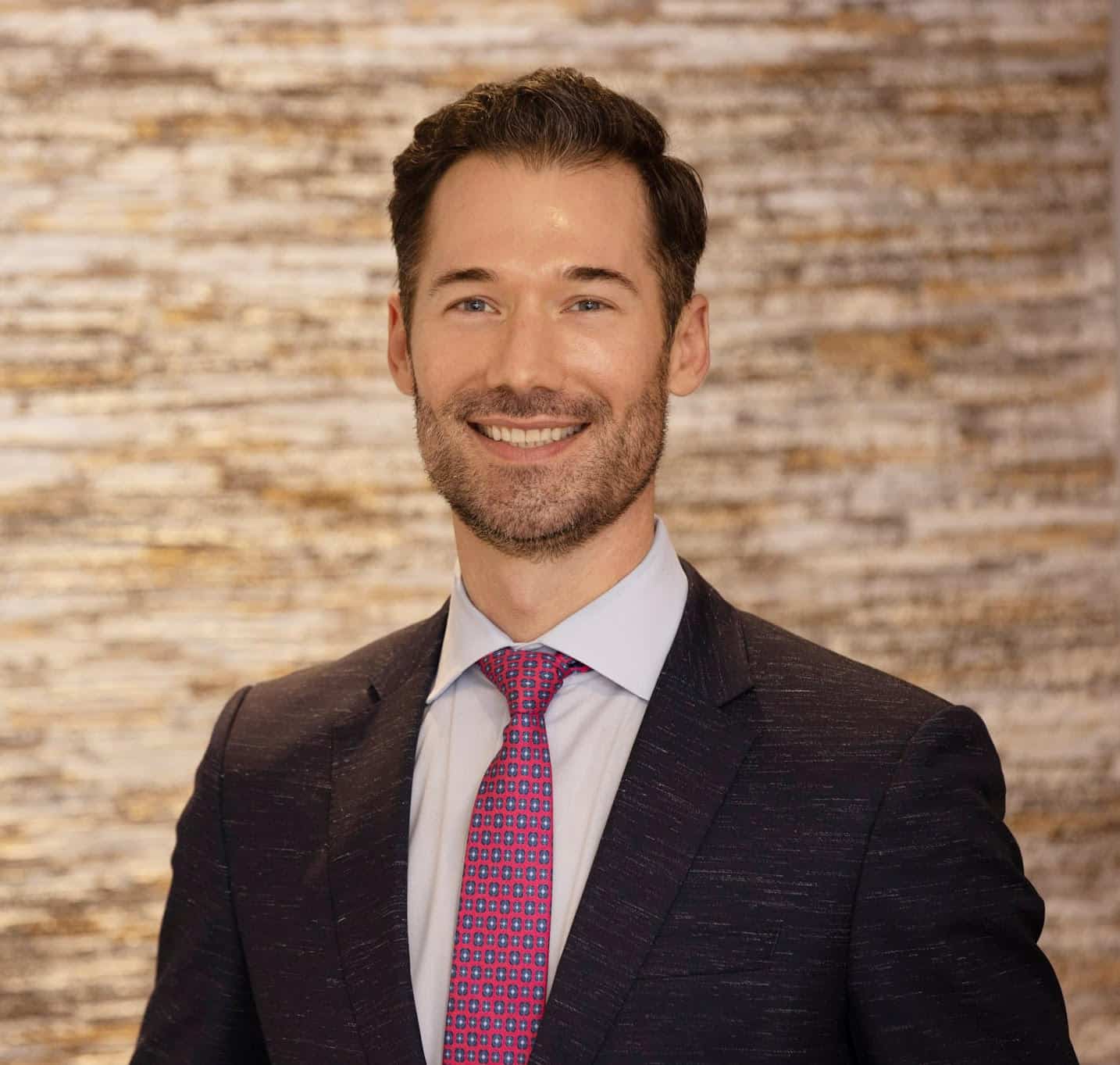
Dr. Somenek has extensive training and experience with this surgery. His fellowship training was under the tutelage of some of the best rhinoplasty surgeons in the country, Drs. Regan Thomas and Dean Toriumi at the University of Illinois at Chicago. Since 2018, Washingtonian Magazine has named him a Top Doctor and highlighted him as the “Face of Rhinoplasty.” Even more importantly, patients have taken notice too – Somenek+Pittman MD was the 2021 readers’ choice for plastic surgery and MedSpa services in DC Modern Luxury Magazine.
Dr. Somenek brings a unique perspective and understands how to not only make the nose look good but also preserve the structure for long-lasting and satisfactory results for the patient.
Due to his vast expertise, Dr. Somenek is often sought by patients for some of the most complex rhinoplasty cases.
"Dr. Somenek is truly an artist and a master at what he does. I came in for a revision rhinoplasty and he fixed my deviated septum, added structure inside using ear cartilage, and created symmetry in my nostrils. I am less than three weeks out from my surgery and have zero swelling- my nose looks and feels fantastic. I am beyond happy with my results and couldn’t recommend Dr. Somenek and his team more. The office team is very warm, helpful and organized. The surgical suite is an oasis and I felt extremely comfortable before and after my surgery. Truly couldn’t be happier with my results. Thank you Dr. Somenek and his A-Team!"
What To Expect During Your Rhinoplasty Consultation in Washington, DC
During the initial consultation, Dr. Somenek uses this time to understand your motivation and expectations for nasal augmentation. It is an opportunity to develop a mutual level of trust and understanding. A detailed physical examination is performed to determine the areas that will require correction in the nose to provide the best results.
Dr. Somenek will go over a thorough list of expectations and risks that are involved in surgery. He will explain the various structures in the nose, including bone and cartilage, and how sculpting these can alter the appearance of the nose.
Photos will be taken of the patient’s face, and with the help of sophisticated imaging software, computer imaging will be performed. This will aid in creating realistic expectations for the patient that are in line with the patient’s needs and desires based on their individual anatomy.
In addition, Dr. Somenek may suggest other procedures such as chin augmentation and blepharoplasty surgery that can enhance the overall harmony of the face. It is always beneficial for the patient to compile a list of questions to ask during the consultation, as this can clarify any concerns about the procedure and help better delineate if your expectations are in line with Dr. Somenek’s aesthetic goals for your nose.
Dr. Somenek believes in creating a natural-looking and aesthetically pleasing nose for the patient. Rhinoplasty is one of the most difficult operations in facial plastic surgery. The difficulty lies in the anatomy of the nose, as this varies from patient to patient. For this reason, Dr. Somenek creates an individualized surgical plan for each patient and utilizes comprehensive techniques to achieve this plan.
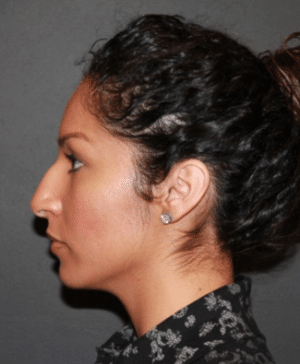
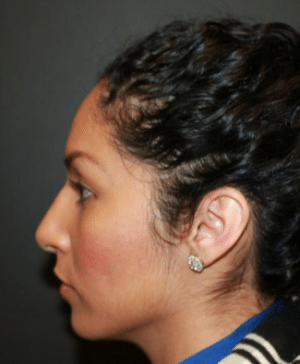
Different Approaches to Rhinoplasty
Since rhinoplasty procedures are individualized to a patient’s unique nasal structure and cosmetic goals, the operation could take several possible approaches to facilitate different results. The best strategy depends on the number of cosmetic changes that the patient wants, their nasal structure, and the length of recovery they are willing to go through. A person looking to get a nose job in Washington DC should consider any of the following types of procedures:
- Open Rhinoplasty: The typical surgical approach is an open rhinoplasty, in which Dr. Somenek surgically lifts the skin to allow for more substantial and visible cartilage and bone changes.
- Closed Rhinoplasty: When patients require fewer bone and cartilage alterations, a closed rhinoplasty that uses two incisions within the nostrils may be ideal.
- Septoplasty: A septoplasty procedure focuses exclusively on correcting issues with the nasal anatomy that disrupts breathing, such as a deviated septum.
- Tip Rhinoplasty: A nasal tip plasty makes cosmetic changes to the tip of the nose specifically, eliminating the need for bone and cartilage alterations.
- Cartilage Grafts: In some cases, cartilage grafts that are taken from the ribs or ears may replace volume loss in the nose, and strengthen support of the nasal anatomy.
Among these surgical approaches, an open rhinoplasty is the most common procedure as it allows for more cosmetic and structural changes to the nose than a closed or tip procedure. In addition, an open procedure allows Dr. Somenek to have more visibility of the bone and cartilage, making it easier for him to make more precise alterations.
Can I Improve My Breathing With Rhinoplasty?
In many cases, patients undergo cosmetic nose surgery and a septoplasty simultaneously to correct breathing difficulties and improve aesthetics. Since the facial structure and cosmetic aims for a rhinoplasty will vary between patients, a thorough consultation with Dr. Somenek is necessary to determine the best approach.
Cartilage Grafts for the Nose
Not all cartilage grafts serve the same function and Dr. Somenek employs a number of different grafting techniques, allowing for multiple methods of nasal correction.
- Spreader Graft: Widens – or “spreads” – the middle portion of the nose. This addresses the internal nasal valve that can be narrowed in some patients and contribute to nasal obstruction.
- Septal Extension Graft: A piece of cartilage placed on the tip of the nose in order to extend and shape it. It adds greater long-term stability to the nasal tip.
- Columella Strut: Cartilage that is placed within the nasal tip structure to add support to the tip position.
- Rib Graft: Taking a piece of the patient’s rib cartilage and repurposing it to restructure the nose.
- Ear Cartilage Graft: Taking a piece of the patient’s ear cartilage and repurposing it to restructure the nose. (This does not alter the look of the ear in any significant way.)
- Lateral Crural Strut Graft: Grafts that can enhance breathing capability by reinforcing the existing cartilage within the nasal tip. It is particularly useful for cartilage that is weak or misshapen within the nasal tip.
- Shield Graft: A small shield-shaped graft that can add length to the nasal tip and project the nose further, contributing to the overall definition and refinement to the nasal tip.
- Onlay Graft: Grafts which can augment the shape of a nasal area which lacks sufficient cartilage.
- Batten Graft: Often used to treat collapsed nasal valves and improve a certain form of nasal obstruction.
Check out our blog on cartilage grafting to learn more about this process.
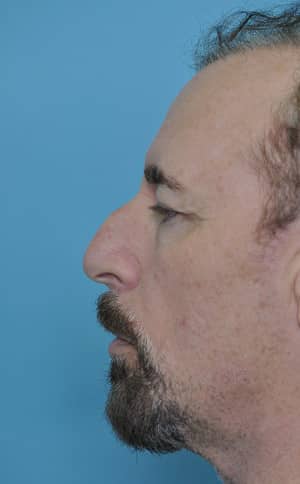
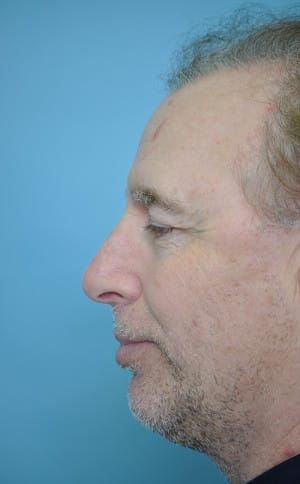
The Rhinoplasty Procedure in Washington DC
Dr. Somenek emphasizes preservation of the nasal structures and minimal excision of the supporting tissues. Removing more tissue and cartilage than necessary may lead to a pinched tip and nasal obstruction.
For primary rhinoplasty, Dr. Somenek uses cartilage grafts harvested from the nasal septum to reinforce critical structures and regions in the nose. These allow him to create a long-lasting result not only aesthetically but functionally for nasal breathing. In more complex cases, cartilage from the ear or rib may be used.
Skin thickness is an important consideration when thinking about getting a nose job. Special attention must be given to thin-skinned individuals, as they are at a higher risk for visible or palpable abnormalities post-operatively. Medium-skinned patients are more ideal candidates for rhinoplasty because as the skin contracts over the underlying cartilaginous structures, any abnormalities are more easily camouflaged.
Watch Dr. Somenek discuss Rhinoplasty Surgery on ABC7 Good Morning Washington
Rhinoplasty Recovery Timeline
The surgery is typically performed on an outpatient basis under general anesthesia at our fully accredited, ambulatory surgery center in the West End. Dr. Somenek does not routinely use packing for the nose, as he believes it adds unnecessary discomfort for your recovery.
At your one-week post-op visit, the nasal cast and the fine sutures that were used to close the incision will be removed. It is important to realize that your nose will be swollen when the cast is removed. Dr. Somenek will place tape on the nose when necessary to decrease the overall amount of swelling. The majority of swelling will resolve within two weeks.
Your face will feel puffy, especially the first day after surgery. Dr. Somenek will advise you to avoid blowing your nose for seven days after surgery. In the days immediately following surgery, you may experience bruising and minor swelling in the eye area. Cold compresses often reduce the bruising and discomfort. Your nasal splints and sutures are removed seven days after surgery.
How Successful is the Rhinoplasty Procedure?
Many people undergo rhinoplasty surgery every year. This procedure is considered one of the most complex and difficult to perform because it requires advanced knowledge of nasal anatomy and meticulous surgical technique. It's important to understand that even though plastic surgeons offer rhinoplasty, they still need to dedicate considerable attention to mastering the skills required to achieve the best results.
Dr. Somenek knows the challenges that can arise within the rhinoplasty process. He has focused his plastic surgery training on facial procedures, with a particular focus on rhinoplasty. His education included direct fellowship training under some of the best rhinoplasty surgeons in the country.
In general, rhinoplasty has a success rate of 85 to 90 percent. The success rate is even higher when the operation is performed by a surgeon with such considerable training as Dr. Somenek.
Will I Be in Pain While Recovering from Rhinoplasty Surgery?
Active recovery from rhinoplasty surgery may take one to two weeks. For the first 24 hours after your procedure, you may have some packing in your nostrils and a dressing across the upper lip just under the nose. This is meant to reduce oozing and "catch" any drainage. The day following your procedure, you'll return to the office to have the packing removed.
At that time, you may notice some soreness and tenderness. Generally, patients use the word "uncomfortable" to describe their early rhinoplasty recovery, not painful. You may take prescription pain medication for a few days to maintain optimal comfort. After a week or so, you may easily transition to over-the-counter medication without any increase in discomfort. Your post-op instructions may also discuss additional strategies to alleviate soreness.
When Can I Go Back to Work or School after My Rhinoplasty?
Dr. Somenek may advise you to take two weeks or more off work or school. This may depend on the extensiveness of your rhinoplasty surgery, the nature of your job, and other factors. The primary objective is that you do not increase your heart rate or blood pressure too much after your procedure; this could prolong tissue recovery and the resolution of swelling. You also want to postpone your return to school, work, and socializing until you feel comfortable with your appearance and have allowed your swelling and bruising to subside.
When Will My Breathing Feel Normal Again after Rhinoplasty Surgery?
While pain may be your primary concern as you prepare for your surgical recovery, most rhinoplasty patients report that the sense of congestion they feel is the most noticeable aspect of early healing. Your breathing may feel "blocked" not because you're truly congested but because the lining of your nasal passages may be swollen and inflamed. This side effect is expected to subside a great deal in the first three weeks of recovery. It may continue to subtly improve after that point for up to several months.
Following up with Dr. Somenek
Follow-up care is vital for this procedure to monitor healing, so it is essential that you keep your follow-up appointments with Dr. Somenek. Much of the swelling will decrease about two weeks post-operatively. However, the healing process will continue to occur for many months after surgery.
Persistent swelling of the nasal tip can occur in some patients depending on their individual anatomy and thickness of their skin. Throughout the follow-up period, Dr. Somenek may recommend steroid injections to the nose or nasal taping to aid in resolution of the swelling and produce the best outcome for his patients. Occasionally, a minor revision to the nose is required and will be discussed with the patient if needed.
Insurance does not generally cover surgery that is purely for cosmetic reasons. Surgery to correct or improve nasal function or surgery for major deformity or injury may be reimbursable in whole or in part. The office will work with the patient to provide the best care possible. Dr. Somenek looks forward to meeting you and working to provide the best aesthetic result to meet your needs.
How Long Do Results From a Rhinoplasty Last?
Results from your rhinoplasty procedure should be long-lasting. For patients who are displeased with their results or would like to make minor revisions, they may seek out a second rhinoplasty. However, no other procedures are required to maintain your results.
What Is The Best Age To Get a Rhinoplasty?
Patients can seek out a rhinoplasty as young as age 14. The key is to make sure they are done growing and the nose is fully formed so that their results are not altered following their procedure.
However, there is no ideal age to get a rhinoplasty. If you are interested in altering the appearance of your nose, cosmetic nose surgery can help.
Conditions That Limit Rhinoplasty Candidacy
Though many people who dislike the look of their nose or experience breathing difficulties due to nasal irregularities are suitable rhinoplasty candidates, some medical conditions might be disqualifying. Severe diabetes or blood disorders that impact the body’s healing process may prevent someone from getting a rhinoplasty procedure in Washington DC.
Further, individuals with severe cardiovascular concerns are at a higher risk of general anesthesia complications during surgery, limiting their candidacy. This is why Dr. Somenek performs a thorough review of the patient’s medical history during the consultation. Patients must also not be pregnant or actively smoking nicotine for at least several weeks before and after the procedure.
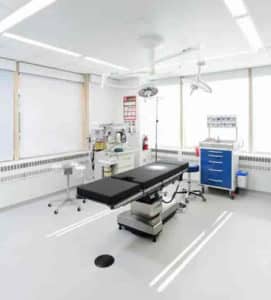
Though a patient may resume smoking at least four weeks after rhinoplasty, the nose could take up to one year to fully recover, so refraining entirely from nicotine is the preferable option.
However, if a patient is generally healthy and has realistic expectations, they are suitable for this procedure. If this is not a patient’s first nose job, the secondary surgery must be at least 12 months after the initial one to ensure the nose is healed completely.
How Often Are Secondary Procedures Needed?
Research conducted on 732 patients between 2005 and 2015 showed that only 8.6% underwent revisions. This could be due to a number of factors, including miscommunications between the surgeon and patient, outdated techniques, and changes in the patient's goals.
Does Your Practice Offer Revisions If I Got My Rhinoplasty Done Elsewhere?
We can provide revision rhinoplasty procedures for patients who are dissatisfied with their current results. Dr. Somenek is skilled in helping patients achieve their aesthetic goals due to his extensive experience and knowledge of the structures of the nose. He can work with you to achieve a balanced and symmetrical appearance while ensuring functionality. Schedule a consultation at our office today to discuss your goals for your revision procedure today.
When Should I Get a Chin Augmentation in Addition to My Rhinoplasty?
A chin augmentation may be recommended for patients who have a small, receding chin or to restore balance to the face. This procedure typically involves the placement of implants to help achieve more projection and definition from the chin. Balancing proportions between your chin and nose area can help patients appear more proportional.
When Should I Get a Blepharoplasty in Addition to My Rhinoplasty?
Achieving a balance between the eyes and the nose can have a major impact on the appearance of a patient’s face. Combining a blepharoplasty procedure with a rhinoplasty can help give the eyes and the nose an overall natural appearance. A blepharoplasty may be recommended for patients who have chronically puffy eyes or sagging eyelids.
Can I Get a Chin Augmentation and Blepharoplasty at the Same Time As My Rhinoplasty?
Yes, the rhinoplasty procedure is often combined with other procedures in order to achieve optimal facial balancing. Combining multiple procedures into one surgery can help cut down on recovery time, allowing the patient to heal all at once. During your initial consultation, your surgeon can determine which additional facial procedures will help you achieve the most proportionate facial balance. If you decide that you'd like to move forward with both procedures, we'll talk with you about your personalized surgical plan and unique healing process.
What Makes the Rhinoplasty a Complex Procedure?
The rhinoplasty procedure can be complex due to several factors. First, the nose can be a complicated shape, personalized to each patient’s face. You may want to preserve some of the features of your current nose while making changes to other aspects.
Subtle changes can change the appearance of your nose drastically. It’s important that surgeons pay very close attention to detail. Recovering from a nose job may also lead to complications if a patient does not follow their aftercare guidelines correctly. However, at Somenek + Pittman MD, our team is ready to help you complete a successful rhinoplasty recovery every step of the way.
Benefits of Rhinoplasty
The overall satisfaction rate for rhinoplasties in both men and women is 83.6 percent, with many reporting that their new nose has helped to increase their self-confidence. In addition to this, rhinoplasty can provide the following benefits:
- Correct the appearance of a crooked, broken, or asymmetrical nose
- Correct congenital abnormalities
- Improve breathing and sinus problems
- Reduce snoring
- Achieve facial balancing
How Much Does a Rhinoplasty Cost?
The average cost of rhinoplasty in America can be between $5,000 and $10,000, depending on the details of your procedure. In some cases, insurance may cover the cost of a rhinoplasty procedure if your nose structure makes it difficult for you to breathe or causes other health issues.
What Are the Risks of a Rhinoplasty?
Like any surgery, a rhinoplasty does come with a few risk factors that patients should be aware of. These risk factors can include:
- Reactions to anesthesia
- Difficulty breathing
- Infection
- Poor wound healing
- Scarring
- Discoloration of the skin on the nose
- Increased skin sensation
- Numbness on the skin
- Nasal septal perforation
Your safety is our top priority, and it's important to us that you feel comfortable through every step of your procedure. Our team will work with you prior to surgery to ensure that you fully understand the risks of rhinoplasty. If you develop complications after your surgery, we'll work with you to help you heal completely and comfortably.
Common Misconceptions on Rhinoplasty
There are many misconceptions about the rhinoplasty procedure. Many people believe that rhinoplasty is only for women and it provides them with an unnatural-looking nose that results in a “fake” appearance. These misconceptions are all untrue, as a rhinoplasty can benefit both men and women. And with a very skilled surgeon like Dr. Somenek, a natural-looking result can easily be achieved.
Schedule a Rhinoplasty Consultation
Rhinoplasties are becoming more and more common, and Somenek + Pittman MD is proud to be your destination for nasal surgery and all other plastic surgery decisions. We are committed to your health and privacy, and can even schedule an overnight stay at a nearby hotel after your operation, for your convenience. If you have further questions regarding rhinoplasty in Washington DC, please call or contact our office today to schedule your initial consultation with Dr. Somenek.
